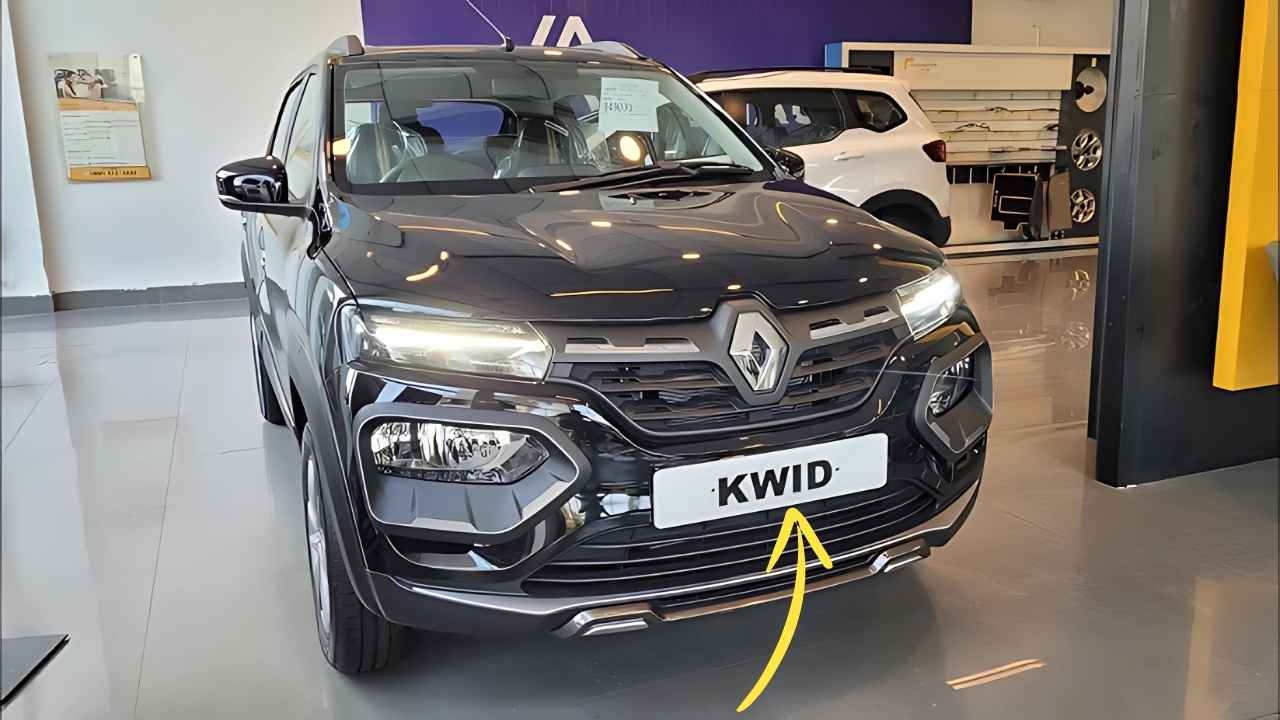Renault Kwid: In the competitive small car landscape of emerging markets, the Renault Kwid has established itself as a distinctive option that combines SUV-inspired styling with practical features at an accessible price point.
Since its introduction, this cleverly positioned vehicle has challenged conventional notions of what entry-level mobility can offer, creating a new paradigm that competitors have rushed to emulate.
Design Philosophy
The Renault Kwid embraces a design approach that deliberately evokes crossover styling cues despite its compact dimensions.
The raised stance, pronounced wheel arches, and muscular body lines create visual distinction from traditional small hatchbacks, appealing to consumers who appreciate SUV aesthetics but require the affordability and efficiency of a compact vehicle.
The front fascia features Renault’s signature grille design flanked by stylish headlamps that incorporate LED daytime running lights on higher trims.
This lighting arrangement creates a more premium appearance than typically found in this segment.
The side profile maintains clean lines with subtle plastic cladding that reinforces the crossover-inspired character, while the rear design continues the contemporary theme with C-shaped tail lamps.
Available in several attractive colors including Zanskar Blue, Outback Bronze, and Moonlight Silver, the Kwid offers visual personalization that appeals to diverse consumer preferences.
The overall design successfully combines personality with practicality, creating an emotional connection that elevates the vehicle beyond basic transportation.
Interior Space and Functionality
Stepping inside reveals an interior that maximizes space efficiency despite the Kwid’s compact external footprint. The dashboard follows a straightforward layout centered around a touchscreen infotainment system on higher trims, with digital instrumentation that provides essential driving information without unnecessary complexity.
Seating comfort receives appropriate attention with front seats that provide reasonable support for urban driving conditions.
Rear passengers benefit from surprisingly generous legroom given the vehicle’s compact dimensions, though three adults would find the rear bench cramped for extended journeys.
The elevated seating position—a benefit of the crossover-inspired design—provides improved visibility that enhances confidence during city driving.
The 279-liter cargo capacity proves competitive for the segment, easily accommodating grocery runs or weekend bags.
The 60:40 split folding rear seats expand versatility when larger cargo capacity is required, creating a practical solution for occasional transport needs.
Technology Integration
Technology represents a significant differentiator for the Kwid, with features previously uncommon in entry-level vehicles.
The 8-inch touchscreen infotainment system on higher trims supports smartphone integration through Apple CarPlay and Android Auto, providing navigation, media control, and communication functions without requiring expensive built-in systems.
The digital instrument cluster provides essential driving information in a clear, legible format, while the rear parking camera aids maneuvering in tight spaces—a valuable feature given the vehicle’s urban focus.
Power windows, central locking with remote keyless entry, and electrically adjustable side mirrors on premium variants enhance everyday convenience.
These technology features create meaningful differentiation in a segment where basic functionality has traditionally been the primary focus, addressing the growing consumer expectation for connected features regardless of vehicle price point.
Performance and Efficiency
The Kwid offers two engine options to suit different priorities. The entry-level 0.8-liter three-cylinder engine produces approximately 54 horsepower, delivering adequate performance for urban environments while maximizing fuel efficiency.
The more powerful 1.0-liter option generates around 68 horsepower, providing improved acceleration and overtaking capability without significantly compromising economy.
Transmission options include a 5-speed manual as standard, with an automated manual transmission (AMT) available with the 1.0-liter engine.
The AMT option provides two-pedal convenience without the cost and complexity of a conventional automatic—a valuable proposition for navigating congested urban traffic.
Fuel efficiency represents a significant strength, with both engines delivering excellent economy under standard testing conditions.
This efficiency translates to reduced operating costs—a critical consideration for first-time car buyers and budget-conscious consumers that represent the Kwid’s primary market.
The driving experience prioritizes ease of use and maneuverability over dynamic handling, with light steering effort and a tight turning radius that enhance city driving practicality.
The suspension tuning balances reasonable comfort with the limitations of a short wheelbase, though rough roads will transmit more vibration than would be experienced in larger, more expensive vehicles.
Safety Considerations
Safety equipment varies by market and trim level, with dual front airbags, anti-lock braking with electronic brakeforce distribution, and rear parking sensors available on higher variants.
The underlying structure has been progressively strengthened throughout the model’s lifespan to improve crash protection, though the Kwid’s lightweight construction and compact dimensions create inherent limitations compared to larger, heavier vehicles.
These safety features represent a balanced approach for the segment, providing essential protection while maintaining the affordability that defines the Kwid’s market position.
As safety regulations continue to evolve globally, subsequent updates will likely incorporate additional features to meet both regulatory requirements and increasing consumer awareness.
Market Position and Impact
The Kwid occupies a strategic position in Renault’s global portfolio, serving as an entry point that introduces new customers to the brand in emerging markets.
This positioning allows Renault to establish brand presence and dealer networks in developing regions while providing accessible mobility solutions that align with local economic conditions.
The vehicle’s success has forced competitors to reconsider their approach to entry-level vehicles, with many introducing similar crossover-inspired designs and enhanced feature sets to remain competitive.
This market response demonstrates the Kwid’s significance in reshaping consumer expectations within the segment.
Renault Kwid:
The Renault Kwid represents a thoughtful approach to entry-level mobility that acknowledges both practical requirements and emotional considerations.
By combining crossover-inspired styling with practical technology features and efficient performance, Renault has created a vehicle that satisfies basic transportation needs while providing elements of desire typically absent from this segment.
For consumers seeking affordable personal mobility with personality and practicality, the Kwid presents a compelling proposition that demonstrates how thoughtful design and feature integration can transform perceptions of entry-level vehicles.
Also read this –

